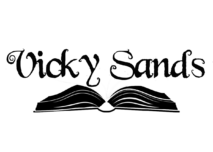When the Word Became Flesh: A Little History of Reading
What makes us different from all living beings is our capacity to think on a higher level and self-expression. These are just a few characteristics. The fact is, we differ from them because of our complex communication systems which include reading.
Let’s learn how reading, which is a vital part of the knowledge-sharing and communication process, became a game changer.

A Picture Paints a Thousand Words
A 40,000-year-old cave painting discovered in Indonesia amazed a group of archaeologists. It depicts three wild pigs or specie of warty pigs. This is one of the earliest forms of communication. This means, early humans, developed a reading system to understand the meaning. A theory suggests that the person who made the painting shows the reader the location of the pigs.
Other cave paintings found elsewhere depict other animals and human stick figures. Some tell us about rituals and religion. One thing is sure, such drawings became the first forms of communication that the earliest human read. A picture paints a thousand words indeed.
From Cave Paintings to Pages

During the early years of civilization, bookmaking required unique materials like clay tablets, shells, tree barks, and bamboo sticks. Some even used thin sheets of gold.
Everything changed when the Egyptians invented papyrus, while the Chinese created paper. This allowed the binding of each page into a collection of text. Another material that was used is parchment. These thinner materials were necessary to create a book and underwent the process of binding to form one.
The word book is actually from an old English word boc, meaning a charter or document. These bounded documents contain various knowledge, usually instructions for reading and writing. Serious reading indeed began with the invention of books.
Pictures in the Books: Expanding the Text
The Egyptian “Book of the Dead” is probably one of the earliest books with either symbols or drawings. With these combined, they formed the hieroglyphic writing system.
Later on, 15th-century books were made with intricate drawings. These images gave meaning to the text. A percentage of it was instructions for an activity, while others described events.
The important role of pictures in books was to spark the reader’s imagination. The fast spread of ideas during those early times was due to these clear images. Readers were able to interpret the text truthfully and inspired readers to explore worlds beyond.
The Spark: First books for inspiration
Here are some of the first books that stirred human souls to read more:
- The Bible. It is the basic text of Christianity, written over a period of several centuries. Within it is a collection of different types of literature. Johann Gutenberg takes credit for printing the first bible.
- The Epic of Gilgamesh. The earliest works of literature in cuneiform. This Mesopotamian poem, read by ancient Sumerians tells the story of Gilgamesh.
- The Odyssey. One of the greatest ancient Greek texts. It is the story of Odysseus and his journey home after the Trojan War. This is a must-read book for students of World Literature.
Reading: How far did it go?
Modern technology brought about the mass printing of books. It did go very far since the invention of the printing press by Johann Gutenberg. Today, we have famous publishers who brought us timeless classics and new inspirations. Famous publishers today for novels and literature are Harper Collins, Penguin Random House, and Bloomsbury.
If you are a bookworm, you might enjoy joining a book club. You can sign-up for one now using the internet. Popular choices include Goodreads, Oprah’s Book Club, and New York Times Book Club.
